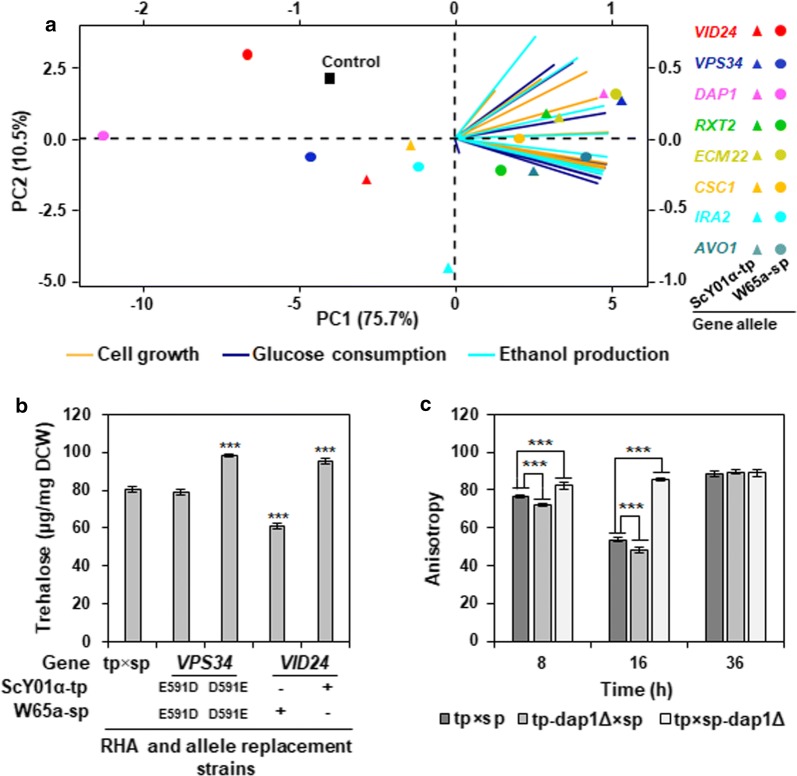Fig. 6.
Principal component analysis of high-temperature fermentation data and physiological impacts of key causative genes. a Principal component analysis (PCA) of high-temperature fermentation data from all the RHA and allele replacement strains, including cell growth (orange lines), glucose consumption (purple lines) and ethanol production (turquoise lines) during fermentation (hours 0, 8, 12, 18, 24 30 36 42 and 48). Means of biological repeats (in duplicates) are used. The gene alleles originating from the superior (ScY01α-tp, triangle symbols) and inferior (W65a-sp, circle symbols) parents in the RHA and allele replacement strains were colour-coded. b Trehalose accumulation in the RHA and allele replacement strains of VID24 and VPS34 at high temperature. c Membrane fluidity of the RHA strains of DAP1 at high temperature. The Membrane fluidity is determined by the steady-state anisotropy of fluorescent probe 1-[4-(trimethylamino)pheny]-6-phenyl-1,3,5-hexatriene (TMA-DPH). Yeast cells were grown at 42 °C in 100 ml Erlenmeyer flasks containing 50 ml YP medium with 200 g/l glucose at 220 rpm. For measuring trehalose accumulation, cells were harvested after incubation for 36 h. For determining membrane fluidity, cells were harvested after incubation for 8 h, 16 h and 36 h at the early-exponential, mid-exponential and stationary phases, respectively. Data represent the mean and standard error of duplicate cultures at each condition. Statistical analysis in b and c was performed using one-way ANOVA followed by Tukey’s multiple-comparison posttest (***P < 0.001, **P < 0.01, *P < 0.05)

